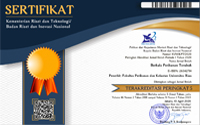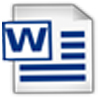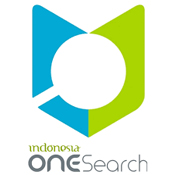Marine Debris Identification and Ecotourism Management on Hoga Island Kaledupa District Wakatobi Regency
Abstract
Keywords
Full Text:
PDFReferences
Asuhadi, S., Amir, A. B., dan Sarira, N. H. (2021). Konservasi Keanekaragaman Hayati Laut. 1(e-ISSN: 2774-8308), 195-208.
Avio, C., Gorbi, S., dan Regoli, F. (2016). Plastics and microplastics in the oceans: From emerging pollutants to emerged threat. Mar. Environ. Res.
CSIRO. (2014). Marine Debris sources, distribution and fate of plastic and other refuse – and its impact on ocean and coastal wildlife. https://www.csiro.au/en/Research/OandA/Areas/Marine-resources-andindustries/Marine-debris
Derraik. (2012). The Pollution of the Marine Environment by Plastic Debris: a Review. Marine Pollution Bulletin, 842-852.
Dilwan, M. A., Astina, I. K., dan Bachri, S. (2019). Pariwisata Wakatobi dalam Perspektif Produksi Ruang. Jurnal Pendidikan, 2025 (4), 1496-1503.
Dinas Pariwisata Kabupaten Wakatobi. (2019). Kreasi Wakatobi,1-111.
Dinas Penanaman Modal dan Pelayanan Terpadu Satu Pintu Kabupaten Wakatobi. (2020). Potensi dan Peluang Investasi Kabupaten Wakatobi. PIIDI & Qayris Cipta Kreasindo, 24-27.
Gall, S. C., dan Thompson, R. C. (2015). The impact of debris on marine life. 170-179.
Hermawan, R., Aristawati, A. T., Pramita, E. A., Mubin., Fitrawati, R., Finarti., Akbar, M., Renol., Salanggon, A. M., & Ula, R. (2022). Analisis Invasi Spesies Asing Pada Sampah Laut di Teluk Palu, Sulawesi Tengah. Berkala Perikanan Terubuk, 50 (2), 1495-1501.
Jambeck, J.R. (2015). Plastic waste inputs from land into the ocean. Climate Chane 2014: Impacts, Adaptation, and Vulnerability, 347, 1655-1732.
Lippiat, S., Opfer, S. & Arthur, C. (2013). Marine Debris and Monitoring Assesment.
Lukman, M. Y., Zaki, M., & Ikhsan, A. M. (2019). Pengembangan Potensi Kawasan Agrowisata Pulau Kaledupa di Kabupaten Wakatobi. Business Horizons, 4(1), 21–29.
Menteri Kehutanan. (1996). SK Menhut No.393/KPTS-VI/1996, tentang Penunjukan Kawasan Kepulauan Wakatobi Dan Perairan Laut Di Sekitarnya Di Kabupaten Daerah Tingkat II Buton, Propinsi Daerah Tingkat I Sulawesi Tenggara Seluas ± 1.390.000 (Satu Juta Tiga Ratus Sembilan Puluh Ribu).
Muis, A. A., Sumarmi., & Astina, I. K. (2016). Strategi Pengembangan Ekowisata Bahari sebagai Sumber Belajar Geografi Pariwisata. Jurnal Pendidikan: Teori, Penelitian, dan Pengembangan, 1 (11), 2178–2188.
NOAA [National Oceanic and Atmospheric Administration]. (2013). Programmatic Environmental Assessment (PEA) for the NOAA Marine Debris Program (MDP). Maryland (US): NOAA.
NOAA [National Oceanic and Atmospheric Administration]. (2015). Programmatic Environmental Assessment (PEA) for the NOAA Marine Debris Program (MDP). Maryland (US): NOAA.
Panjaitan, M. L., Yasser, M., Kusumaningrum, W., & Simarangkir, O. R. (2021). Ekowisata Pantai di Pulau Beras Basah Kota Bontang Kalimantan Timur. Berkala Perikanan Terubuk, 49 (3), 1178-1185.
Pemerintah Daerah Kabupaten Wakatobi. (2013). Rencana Pembangunan Jangka Panjang Daerah (RPJPD) Kabupaten Wakatobi 2005 – 2025.
Pet-Soede, L., & Erdmann, M. (2003). Rapid Ecological Assessment Wakatobi National Park. In TNC-WWF Join Program Wakatobi-Indonesia.
Purwanto, P., Astina, I. K., & Suharto, Y. (2015). Pemanfaatan Sistem Informasi Geografi untuk Pemodelan Spasial Pengembangan Wisata Pantai di Kabupaten Tulungagung. Jurnal Pendidikan Geografi, 20 (1), 12–23. https:// /doi.org/10.17977/um017v20i12015p012
Rahayu, A.Y. (2018). Menteri Susi: Bawa Botol Plastik Mineral ke KKP Kena Denda Rp 500 Ribu. http://m.liputan6.com/amp/3735284/menteri-susi-bawa-botol-plastik-mineral-ke-kkpkena-denda-rp-500-ribu.
Saputro, T. eko & Q. (2013). Eksplorasi Potensi Fisik Kawasan Pantai Jogan, Pantai Nglambor, dan Pantai Siung sebagai Kawasan Wisata Pantai. Jurnal Sinektika, 13 (1), 1–10.
Syahadat, R. M. (2022). Inventarisasi dan Identifikasi Objek Daya Tarik Wisata dalam Perencanaan Pariwisata Wakatobi. Journal of Regional and Rural Development Planning, 30-46.
Undang-Undang Nomor 1 Tahun 2014. (2014). Tentang Perubahan Atas Undang-Undang Nomor 27 Tahun 2007 Tentang Pengelolaan Wilayah Pesisir Dan Pulau-Pulau Kecil.
United Nations Environment Programme (UNEP). (2012). Converting Waste Plastics Into a Resource, Division of Technology, Industry and Economics International Environmental Technology Centre. Osaka/Shiga.
Zhukov, A. (2017). The distribution, abundance and characteristics of plastic debris along the Coast of Grândola, Portugal. Bachelor’s thesis in Natural Resources Degree Programme in Sustainable Coastal Management. Portugal : Novia University of Applied Science.
DOI: http://dx.doi.org/10.31258/terubuk.50.3.1710-1721
Refbacks
- There are currently no refbacks.
Copyright (c) 2023 Haerudin La Turi, Muhammad Yasser, Widya Kusumaningrum, Hamdhani Hamdhani, Paulus Taru, Omega Raya Simarangkir

This work is licensed under a Creative Commons Attribution 4.0 International License.












